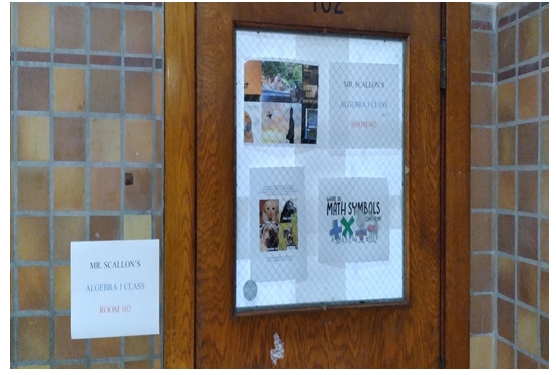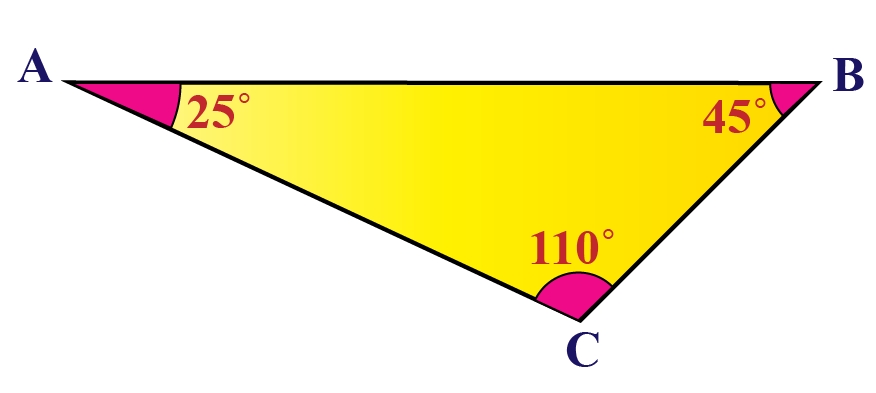FRESHMAN ALGEBA
When the High Schools were build, I can only speak of Providence, RI, each classroom door had a window. Now, all of the classroom windows are covered over from the inside with non-transulent paper. You can probably figure out why. Many of the teachers sought to decorate these doors, as I with funny photographs and a plackard describing the name of the teacher, the subject being taught and the classroom number.
Here we have the Freshman Algebra classroom 102 with photos of agebra notations.
The following is the curriculum for the Freshman High School Algebra:
We used McGraw Hill Ilustrative Mathematics beginning with
1. Data Representtions 6. Standard Deviation
2. Shape of Distribution 7. Comparing Data Swts
3. Calculating Measures of Center 8. Linear Equations, Inequalities
4. Spreadsheet Computations 9. Linear Equations with One Variable
5. technoloogical Graphing 10. Linear Equations with two variables Mc Graw - Hill Answer Video.MP4 * Finlly, solving linear equations,
2X + 5 = 15 what ever is done on one side of the equal sign do the opposite to the other side
15 - 5 = 10 One would take 5 from both sides of the equal sign and one would end up with this
2X/2 = X = 10/2 So the opposite of multiplication is division, so one would divide 2 from both sides X = 5 So simple division of both 2X to isolate X and also 10 divided by 2 would give one 5 PRACTICAL EXAMPLES: Let's assume we need to figure the length of a leg in a equlateral triangle
Two angles near the horizontal side have equal measurements in degrees A an B The sum of angles in a triangle is 180º, so the relationshipbetween the angles can be expressed as: A + B +C = 180 Suppose we want to find C when both A & B are 20º each Let's substitute 20º for C & B A + B +C = 180º 20A + 20B = 180º 2C = 180 - 20 2C = 160 C = 80 What is the value of A if C =45º A + B + C = 180º 2A + 45 = 180 2A = 180 - 45 2A = 135 A =67.5 RULES OF ALGEBRA a(b +c) = ab + ac WHERE DID WE GET Pi FROM ? Pi orSimple it is the ratio of the circumference of a circle divided by its diameter
Lets us assume that the circumference "C" of the circle is 22 further let us assume that the diameter is 7 Therefore 22 / 7 = 3.14 but. . . we had to use Pi to calculate - the circumference which has to be measured Therefore, knowing Pi = 3.14 and the Diamter is 7 multiply 7 x 3.14 = 22 USING THE ABOVE RULES: a (b/c) = ab/c 1. a = 6 b=1 c=3 6(1/3) = 6 *1/3 =2 ____________ 2. a/(b/c) = ac/b 1/(6/2) = 1 * 2/6 = 1/3 ___________ (a/b) - (c/d) = (ad -bc)/bd 3. 3/5 -1/3 =(3 *3) / (5*3) - (1 *5) / (3 *5) = (3 * 3) - (1 * 5) / 3 * 5 = 9 -5/ 15 = 4/15 ___________ 4. ac + bc / c = a + b (4 * 5) + (2 *5) / 5 = 4 * 5 / 5 + 2 * 5 / 5 = 4 + 2


